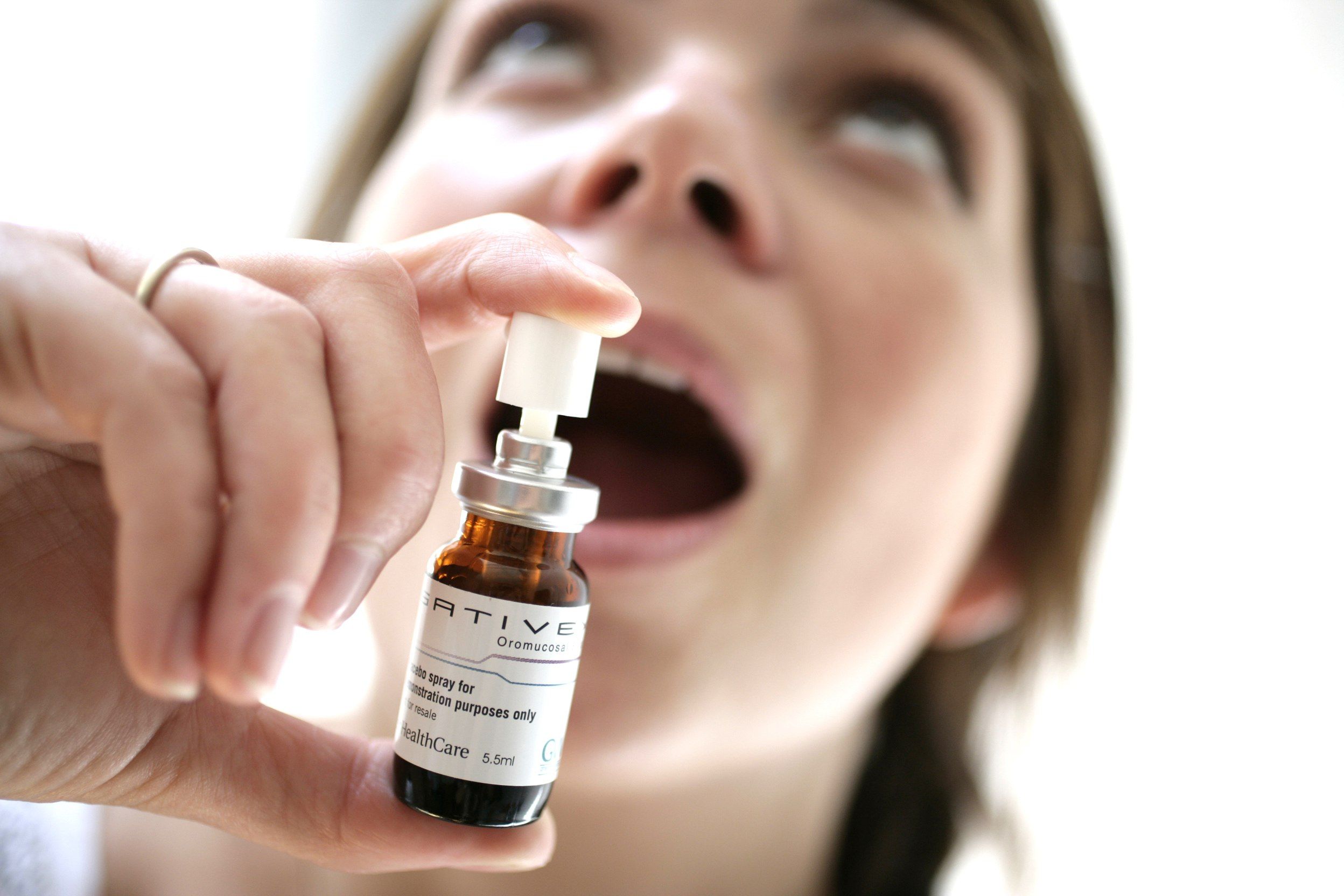With Cannabis, Science Trumps Culture, Says GW Pharma CEO
Already approved in 22 countries, GW Pharma’s Sativex product, if approved by FDA, would become the first prescription drug derived from raw cannabis to enter the US market.
Already approved in 22 countries, GW Pharma’s Sativex product, if approved by FDA, would become the first prescription drug derived from raw cannabis to enter the US market.
In the last several years, the US – a place where marijuana still has a decidedly bad reputation, and a prosecutorial history tinged with socioeconomic bias, if not outright racism – has changed its mind about the need to jail everyone caught holding a dime bag. Sixteen states have either decriminalized or legalized small amounts of cannabis for personal use, or made it legal for patients to consume the drug on doctor’s orders.

GW Pharmaceuticals' Sativex
Medicinal marijuana, as a catchall term covering everything from physician-prescribed pot brownies for glaucoma patients, to anxiety-ridden graduate students self-medicating with bong hits, does not include Sativex, GW Pharmaceuticals’ product indicated for multiple sclerosis-related spasticity, and approved in 22 countries, according to Justin Gover, CEO at GW Pharmaceuticals. Gover doesn’t even like to use the word “marijuana;” he strongly prefers the scientifically precise “cannabis” when describing the company’s platform botanical. “When we look at the cannabis plant…it’s not a single entity. It’s the embodiment of a number of cannabanoids which have a distinct pharmacology.”
To illustrate this distinction, take epilepsy, says Gover. “There are anti-convulsant properties within the cannabis plant, and there are pro-convulsant molecules. If you gave crude marijuana to an epilepsy patient, you risk providing a patient with unknown quantities of a part of a plant which could be good, or might be bad,” says Gover. “We’re able to identify which part of the plant, which molecules, may contribute to an anti-convulstant effect.” Gover says GW Pharma identifies and isolates individual components from the cannabis plant, via extraction, and applies “genuine science and scientific research to produce medicines specifically formulated to target different medical conditions.” Individual components extracted from the cannabis plant can stand alone, or be combined to target disease.
In the US, Sativex – a combination of cannabidiol (CBD) and tetrahydrocannabinol (THC) – is currently undergoing phase III trials for cancer pain. Sativex is formulated as an oromucosal mouth spray, akin to OTC sprays like Chloraseptic or Binaca. Gover says smoking as a delivery mechanism isn’t consistent, and wouldn’t pass regulatory scrutiny, so the options were an oral capsule, an injection, an inhalation, or an oromucosal spray. Sativex was developed as a spray because that route avoids the liver; the active ingredients are absorbed through the lining of the mouth, and go straight into the blood stream, says Gover. The spray formulation also lets patients “fine tune” their dose, a key feature of the drug, since one patient may need five sprays over a day, and another may need six or seven to get the optimal, efficacious dose. Patients can feel the effects of the drug about 20 or 30 minutes after administration, Gover says.
Since GW Pharma is dealing with a schedule 1 substance in the US, the company has worked with several government agencies, including the Drug Enforcement Agency (DEA) and the Office of National Drug Control Policy (ONDCP), the White House’s advisory group on drug policy. Gover says Sativex is a poster child for the future of developing cannabis-derived products. The drug is acknowledged on the White House’s website as an example of legitimate research into the therapeutic components of marijuana. As for the agency that will make the decision to approve, or not, Gover says “FDA expects us to conform to the standards of any medicine they approve, with regard to quality, safety and efficacy.”

GW Pharmaceuticals' in-house grow room
FDA is also tasked with recommending a schedule for the product, whether they approve it or not. Sativex could be the first drug to bring cannabis out of schedule 1 exile, where it currently resides alongside heroin, LSD, peyote, and other substances with “no currently accepted medical use and a high potential for abuse,” according to the DEA classification. FDA has approved synthetic cannabinoid products – Marinol (dronabinol) and Cesamet (nabilone) – but hasn’t to date approved anything derived from the actual plant itself.
After 15 years, Gover says GW Pharma has matured as a company, and its executives don’t have to go out and face intense skepticism any more about whether its products represent genuine scientific promise, and whether regulatory approval is possible. In the US, Otsuka has signed on as the company’s marketing partner. In the UK and Canada, Bayer is marketing Sativex, and Novartis has marketing rights in Australia, parts of Asia and the Middle East, and Africa. Gover says GW Pharma’s products face the same regulatory scrutiny as any other drug its big pharma partners might in-license. The company grows its own cannabis plants in the UK, to control quality and consistency, in “as clean an environment as you can get in the context of a plant-based drug being manufactured to pharmaceutical standards,” says Gover. “When we export, we’re exporting a finished product.”
Phase III trials for Sativex in cancer pain will conclude next year, with an NDA to follow in early 2015, says Gover. But if the product does win FDA approval, it won’t be because of any national trends in the culture, adds Gover. “I actually think it’s in spite of that. The regulatory success of Sativex, and the standing we have with industry is entirely independent of public views about the good or bad of marijuana,” says Gover. “It’s all about looking at cannabinoids as an interesting new source of therapeutics.”
Extra: the BBC took a trip to GW Pharma headquarters back in 2009, as part of a documentary titled “Cannabis: The Evil Weed.” Footage of the visit is available here.
Addressing Disparities in Psoriasis Trials: Takeda's Strategies for Inclusivity in Clinical Research
April 14th 2025LaShell Robinson, Head of Global Feasibility and Trial Equity at Takeda, speaks about the company's strategies to engage patients in underrepresented populations in its phase III psoriasis trials.
Beyond the Prescription: Pharma's Role in Digital Health Conversations
April 1st 2025Join us for an insightful conversation with Jennifer Harakal, Head of Regulatory Affairs at Canopy Life Sciences, as we unpack the evolving intersection of social media and healthcare decisions. Discover how pharmaceutical companies can navigate regulatory challenges while meaningfully engaging with consumers in digital spaces. Jennifer shares expert strategies for responsible marketing, working with influencers, and creating educational content that bridges the gap between patients and healthcare providers. A must-listen for pharma marketers looking to build trust and compliance in today's social media landscape.
FDA Approves Nipocalimab for the Treatment of Generalized Myasthenia Gravis
April 30th 2025Approval is based on results from the pivotal Vivacity-MG3 trial in which IMAAVY (nipocalimab-aahu) demonstrated superior disease control throughout 24 weeks when compared to placebo plus standard of care.